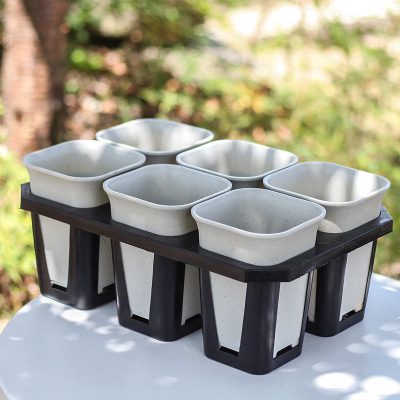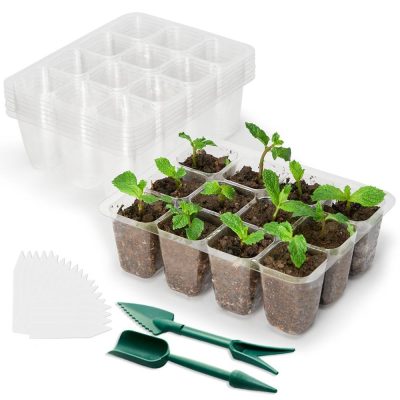When it comes to choosing plant trays, there are various types available, each with its own advantages and suitability for different gardening needs. Here are some common types of plant trays to consider:
- Standard Plastic Plant Trays: These are the most common and widely used plant trays. They are typically made of durable plastic and come in various sizes and cell configurations. Plastic trays are lightweight, easy to clean, and reusable. They often have drainage holes or bottom trays to allow for proper water drainage.
- Biodegradable Plant Trays: Biodegradable plant trays are made from organic materials such as coconut coir, peat moss, or molded fiber. These trays are an environmentally friendly option as they break down naturally over time. They are suitable for starting seeds and can be planted directly into the ground or larger pots, reducing transplant shock.
- Seed Starting Trays with Dome Covers: Some plant trays come with clear plastic dome covers. These covers create a mini greenhouse effect, providing a more humid environment that promotes seed germination. The dome covers help retain moisture and warmth, which can enhance seedling growth. Once the seeds have germinated, the dome covers can be removed.
- Multi-Level Plant Stacking Trays: Multi-level or stacking plant trays are designed to maximize vertical space. These trays have multiple levels or tiers, allowing you to grow more plants in a compact area. They are especially useful for small spaces or when you want to grow a large number of plants in a limited area.
- Self-Watering Plant Trays: Self-watering plant trays have a built-in reservoir that holds water. The plants draw up water as needed through capillary action, ensuring consistent moisture levels and reducing the frequency of watering. These trays are beneficial if you have a busy schedule or if you tend to forget to water your plants regularly.
- Propagation Trays: Propagation trays are specifically designed for plant propagation, such as rooting cuttings or growing new plants from stem or leaf cuttings. They often have individual cells or compartments that allow for easy placement of cuttings. Propagation trays may have clear plastic domes or vents to create a controlled environment for successful rooting.
- Hanging Basket Trays: Hanging basket trays are designed to fit into hanging baskets, allowing you to grow plants in a suspended fashion. These trays often have built-in hooks or hangers that attach to the hanging basket. They provide a convenient solution for vertical gardening and adding greenery to elevated spaces.
When choosing a plant tray, consider factors such as the type of plants you are growing, the available space, your watering preferences, and environmental considerations. Assess the specific features and benefits of each type to determine which one best suits your needs.








